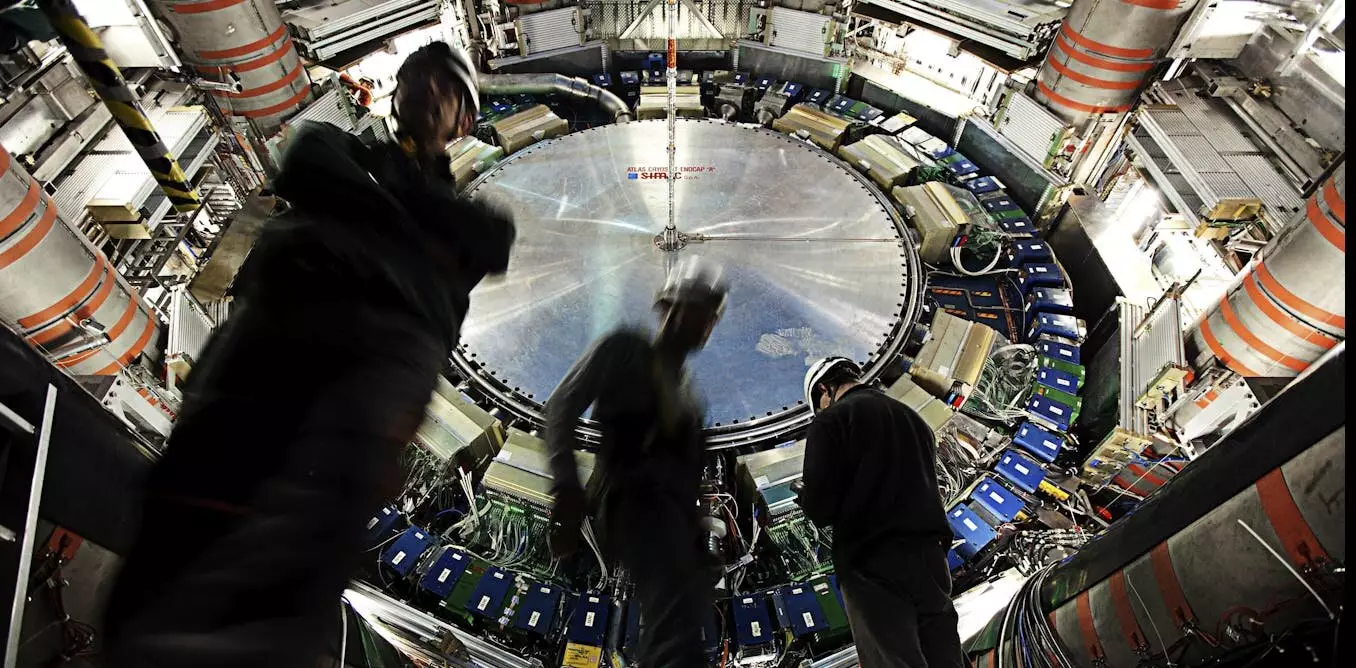Quantum mechanics has introduced a bewildering array of phenomena that challenge our conventional understanding of physics. Among these, entanglement stands out as an especially perplexing concept. In essence, quantum entanglement describes a unique relationship between particles where their states become intrinsically linked, allowing them to influence one another despite being physically separated. This phenomenon raises profound questions about the nature of reality and has implications for future technologies, particularly in quantum computing.
Recent findings from the Large Hadron Collider (LHC) in Geneva shed new light on this intriguing concept. Researchers from the ATLAS collaboration have observed entanglement among top quarks, the heaviest known particles, offering fresh insights into this quantum correlation and:
– Introducing new dimensions to our understanding of particle physics
– Highlighting the unexpected properties of entangled states
This article delves into the phenomenon of entanglement, the specific implications of studying top quarks, and its potential role in paving the way for future scientific advancements.
Entanglement is a phenomenon that seemingly defies our everyday interpretations of distance and connection. In the macroscopic world, objects are either separate or connected by physical means. However, entangled particles exist in a realm where this dichotomy blurs. When two particles are entangled, a measurement made on one instantaneously provides information about the second particle, regardless of the distance separating them. This baffling behavior is attributed to the non-local nature of quantum mechanics.
The phenomenon was first demonstrated experimentally in the 1980s with photons, leading to a wave of curiosity around its applications in theoretical research and technology. Although attempts have been made to exploit entanglement for faster-than-light communication—often portrayed in science fiction—current quantum physics principles assert that such applications remain theoretical and unfeasible. Observations of entanglement have since expanded beyond photons to include various atomic particles and even macroscopic systems, but the recent discovery involving top quarks introduces an unprecedented dimension to this phenomenon.
Top quarks, significantly heavier than other types of quarks, have remained a focal point of study within the physics community due to their anomalous mass and theoretical implications. Weighing approximately 184 times that of a proton, the top quark presents a unique opportunity for researchers at the LHC. The ATLAS team’s recent report indicates that entanglement has been observed in pairs of top quarks, marking a significant milestone in our understanding of high-energy particle physics.
The potential reasons behind the top quark’s enormous mass remain speculative, leading to questions regarding new forces or undiscovered aspects of physics. Its behavior, particularly in states of entanglement, could unravel such mysteries. Given that top quarks can only exist fleetingly in high-energy environments—such as those found in the LHC—the context of their study is inherently different from less massive particles.
The entanglement of top quarks opens exciting avenues not only for theoretical physics but also for experimental research. Although harnessing top quarks for practical applications may not be feasible—given the size and complexity of the LHC—understanding their entanglement could yield philosophical insights into the nature of the universe. It raises questions about the fundamental forces that govern particle behavior and interactions.
Moreover, results obtained from top quark studies might lead to advancements in technology, particularly within quantum computing, where entanglement plays a pivotal role. Scientists have long envisioned building quantum systems based on robust entangled states to enhance computational power or secure communication. Although entanglement in top quarks is not directly applicable to consumer technologies, it enhances our foundational understanding of quantum systems, indirectly shaping the possibilities for future innovations.
Despite the thrilling prospects of entanglement research, it is crucial to remember that quantum entanglement remains a delicate phenomenon. Many successful experiments are conducted under controlled conditions, often at extremely low temperatures, to prevent external disturbances from compromising the entangled states being observed.
Top quarks, with their considerable mass, provide a uniquely appropriate context for studying entanglement, but the inherent fragility of quantum states persists as a challenge. The research from ATLAS is pivotal not only for its direct findings but also for its implications on the tools and methods utilized to study quantum mechanics at high energies.
The discovery of entanglement in top quark pairs at the LHC represents not merely a significant scientific achievement but also an intriguing step forward for our endeavors to understand the fundamental building blocks of the universe. This research offers a tantalizing glimpse into the complex interplay of quantum mechanics and may ultimately create new pathways for future exploration, driving further inquiry into both theoretical understanding and potential technological advancements. As researchers continue to probe the mysteries of quantum entanglement, they take us closer to unlocking the secrets of the universe and understanding our reality at a fundamental level.


Leave a Reply